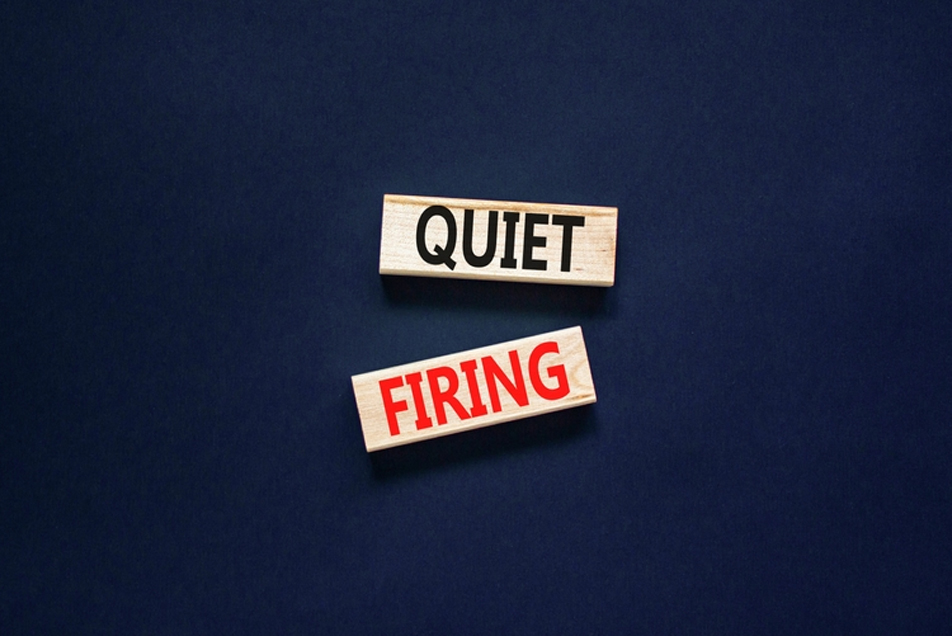While the term “quiet firing” may be new—and chatter around the trend increases—the practice is an age-old tactic used to force an employee to eventually quit. A recent LinkedIn News poll with over 20,000 respondents revealed 48% of employees had seen quiet firing in the workplace, and 35% have faced it during their careers. With the rise of hybrid and remote work, quiet firing has become even more prevalent, both deliberately and inadvertently.
Employers often may struggle to manage disengaged workers, especially those who lack the training or soft skills required to successfully maneuver difficult or potentially confrontational situations. Though not recommended, quiet firing is still viewed as a passive, nonconfrontational method of letting go of an underperforming employee. The tactic includes managers’ making the workplace unpleasant by neglecting employees by not providing meaningful feedback and/or resources, excluding an employee from an important project, or passing someone over for a pay raise or promotion.
Such approaches to employee behavior and performance can be demoralizing for employees and contribute to a toxic workplace culture. Managers and employees determined to withstand and navigate the trend should consider the following.
Avoid ‘Quiet Firing’ as a Manager
In the modern workplace, employers have a responsibility to look after their workforce’s mental health and well-being, which begins with open communication and dialogue. There is no substitute for caring about people, and people generally know whether you do. Managers who are committed to their employees’ success are much less likely to have failing employees and thereby fewer quiet-firing situations. There are multiple ways employers can avoid quiet firing in their organization.
First, provide adequate training to managers about how to have difficult conversations. Second, encourage managers to dedicate time to caring for employees. With regular informal check-ins, managers can determine how employees are doing in their roles, what challenges they are facing, what motivates them during the workweek, and how they maneuver their work/life balance. Employers can also use anonymous employee surveys to take the temperature of the workforce or conduct robust review/promotion procedures.
Additionally, managers should provide an opportunity for difficult employees to improve—to a point. Unless an employee is guilty of gross misconduct, managers need to share when they are not meeting certain expectations and present opportunities for them to improve upon or rectify the issue. Well-trained managers can highlight where an employee needs improvement and create measures and a timeline for improvement. Managers should create the right conditions for employees to succeed and not leave people in the dark about their expectations because they may struggle to meet them. The key is to set clear objectives for every role and have a system to monitor and measure how people are performing.
Like quiet firing, performance management is not new, but as more people work remotely and managers increasingly manage remote workers, it needs a renewed focus. Managers should be vocal about their expectations, keep lines of communication open, and have the uncomfortable conversations backed with compassion, data, and a plan—and document this process. By following these steps, managers can foster an open, honest, and healthy workplace where there is no need to go down the path of quiet firing.
Avoid ‘Quiet Firing’ as an Employee
Unfortunately, at the root of quiet firing is poor communication. If a manager is conflict-avoidant, employees need to advocate for themselves. Employees must communicate directly with their managers and determine the issue, solution, and next steps—and document this process. Aside from direct communication, employees are encouraged to investigate available resources or discover techniques to help them improve at work. Employees are also encouraged to stay updated on their industry and meet deadlines.
Although remote and hybrid work makes it challenging to establish relationships with coworkers, employees afraid of quiet firing can work to leverage preexisting rapport with coworkers and work toward building new relationships. Additionally, employees are encouraged to keep a record of accomplishments and the value they have added at work to help build their case in the event they feel they are being quiet fired.
Employers and employees are encouraged to exhaust all open and transparent communication methods and performance strategies before the need for termination, whether quiet or not. Through clear communication, both parties are empowered to determine any hurdles that may be present in order to improve or determine if it is best to part ways.
Karen Leal is a performance specialist with Insperity, a provider of HR and business performance solutions. For more information about Insperity, visit www.insperity.com.

